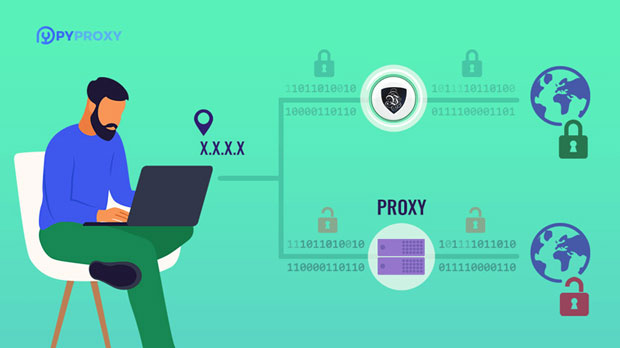What is the difference between a free SOCKS5 agent and a paid SOCKS5 proxy?
When choosing between free socks5 proxies and paid SOCKS5 proxies, users need to understand the key differences that impact their online activities. Free SOCKS5 proxies are usually tempting due to their no-cost nature, but they come with several limitations such as slower speeds, unreliable connections, and potential security risks. In contrast, paid SOCKS5 proxies offer a more stable, faster, and secure experience with added features like better customer support and advanced encryption protocols. This article will delve into the specific distinctions, pros, and cons of each option to help users make an informed decision based on their needs. 1. Speed and PerformanceOne of the most significant differences between free and paid SOCKS5 proxies lies in speed and performance. Free SOCKS5 proxies typically suffer from congestion due to a high number of users. Since they are offered at no cost, many individuals access them, causing slower speeds, packet loss, and higher latency. This can significantly affect activities such as streaming, gaming, or downloading large files.On the other hand, paid SOCKS5 proxies often come with dedicated bandwidth and fewer users per server, ensuring faster and more stable connections. They are usually optimized for specific activities, such as streaming or secure browsing, which helps to maintain high performance. Users who require consistent speeds for professional work or sensitive transactions will find paid proxies a much more reliable choice.2. Security and PrivacySecurity is a major concern when it comes to using proxies, and free SOCKS5 proxies often fall short in this regard. Many free proxy providers do not offer strong encryption protocols, leaving users vulnerable to man-in-the-middle attacks and data breaches. Additionally, some free proxy services may track users' browsing activity, making them a potential privacy risk. These proxies can also be less reliable, leading to unexpected disconnections that may expose sensitive information.Paid SOCKS5 proxies, however, typically offer higher levels of security. They often support stronger encryption algorithms, ensuring that users' online activities remain private and protected from third-party interception. These proxies are also less likely to log or track users' data, adhering to strict privacy policies. Paid providers often implement additional security features such as IP rotation, which helps further anonymize users' online presence.3. Reliability and UptimeReliability and uptime are critical factors for anyone relying on a socks5 proxy for daily use. Free SOCKS5 proxies are prone to frequent outages, connection drops, and server unavailability. The servers hosting free proxies are often overcrowded, and their maintenance is not prioritized. This can lead to frustration and wasted time for users who need a stable connection for business or personal use.In contrast, paid SOCKS5 proxies are generally more reliable. Paid providers invest in high-quality infrastructure and regularly maintain their servers, ensuring minimal downtime. Additionally, paid proxy services often offer service level agreements (SLAs), guaranteeing certain uptime thresholds and quick responses to support queries. Users can expect a much more stable and predictable connection with a paid service.4. Customer SupportCustomer support is another area where free and paid SOCKS5 proxies differ significantly. Free proxies often provide little to no customer support, leaving users to troubleshoot issues on their own. In case of technical difficulties, there may be no clear way to reach out for assistance, which can be frustrating for users who lack the technical know-how to resolve proxy-related issues.Paid SOCKS5 proxies, however, typically come with responsive and professional customer support teams. Many paid services offer 24/7 support via live chat, email, or phone, ensuring that users can get help whenever needed. This is particularly important for businesses or individuals who rely on proxies for critical tasks and need immediate assistance in case of any issues.5. Features and CustomizationFree SOCKS5 proxies usually offer limited features. The configuration options might be basic, and users may not have control over certain aspects like IP location or server selection. This lack of customization can be a significant limitation for users who need a specific type of proxy, such as one located in a particular country or optimized for a specific use case.Paid SOCKS5 proxies, on the other hand, often offer more customization options. Users can select specific locations for their proxy servers, allowing them to access geo-restricted content or improve their online experience in certain regions. Some paid services also provide features such as automatic IP rotation, which enhances anonymity and security. Users may also have access to more advanced settings, allowing them to tailor the proxy to their specific needs.6. Legal and Ethical ConsiderationsWhile free SOCKS5 proxies might seem like a good deal, there are legal and ethical concerns to consider. Some free proxy services may engage in questionable practices, such as injecting ads into users' browsing sessions or collecting and selling user data. Additionally, using free proxies for illegal activities can expose users to legal risks, as some free proxy providers may not be transparent about their operations.Paid SOCKS5 proxies generally operate with clearer and more ethical business models. Reputable paid providers typically have transparent privacy policies and terms of service, ensuring that users' data is not misused. Furthermore, paid proxy services are less likely to engage in unethical practices such as data mining or ad injection.7. Cost vs. ValueThe decision to choose a free or paid SOCKS5 proxy often boils down to the trade-off between cost and value. Free SOCKS5 proxies are, of course, free, which makes them an attractive option for users on a tight budget or those who only need occasional use. However, the limitations in speed, security, and reliability often outweigh the cost savings for users who require consistent and high-quality performance.Paid SOCKS5 proxies come with a subscription fee, but the added value in terms of speed, security, reliability, and customer support often makes them worthwhile for users who need to use proxies regularly or for professional purposes. The investment in a paid service can significantly enhance the user experience, especially for tasks that require high levels of security or performance.ConclusionThe choice between free and paid SOCKS5 proxies ultimately depends on the user's needs and priorities. Free proxies may suffice for casual use or for users who are exploring proxies for the first time. However, for those who require stable, secure, and high-performance proxies, paid SOCKS5 proxies are the better option. The extra cost is often justified by the enhanced security, reliability, and features that paid services provide. Users should weigh the pros and cons of each option based on their specific use cases to ensure they make the best decision for their online activities.
2025-01-09

























































